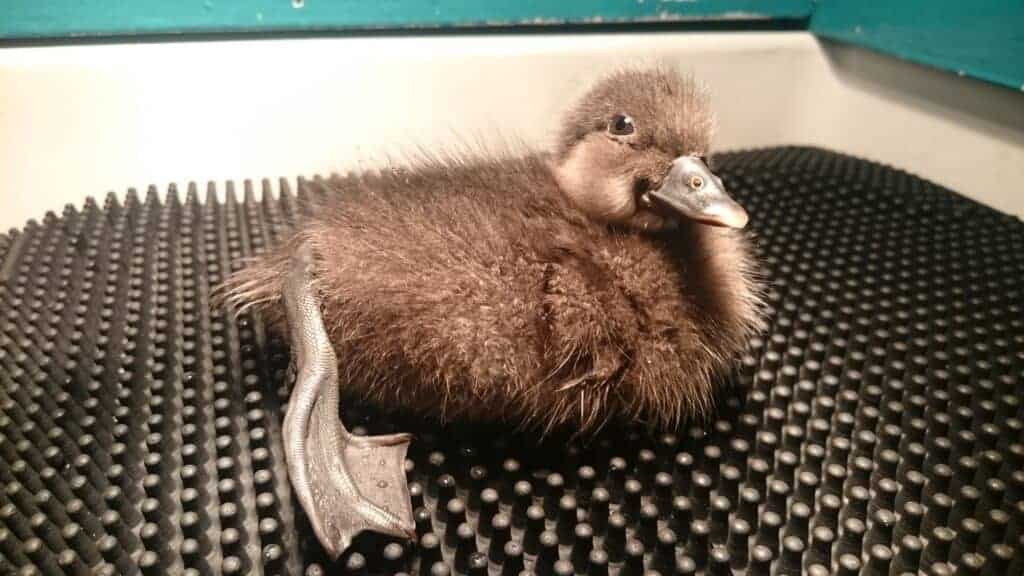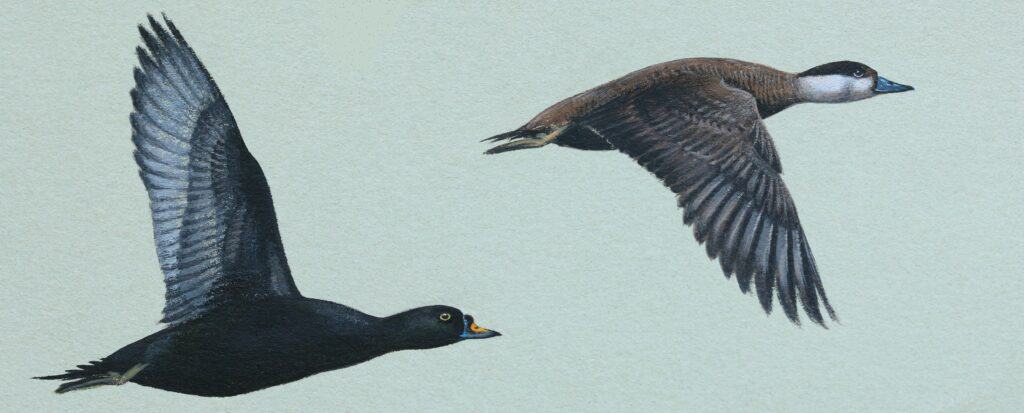Common Scoter

Common Scoter and Black Scoter are best separated by their bill shape:
The Common Scoter has a swollen knob at the base of the bill, with yellow patches around the nostril area. The bill of the Black Scoter tends to be flatter and slightly more compact, with much more yellow extending up to the feather line.

Melanitta nigra
The Common Scoter was long considered to be the same species as the Black Scoter of North America, but now the American bird is a species in its own right — M. americana.
Their ranges are separate and wild hybrids are not seen. Bill colour and voice are different too.
These two birds are the smallest of the scoters, at around a kilo. Drakes are wholly black; their plumage has a glossy sheen with a hint of iridescence on the head.

Their liking for mussels makes them unpopular with commercial shellfish farms. Large wintering flocks can have significant impacts on the valuable shellfish beds. Scoters can eat surprisingly large prey. They have very powerful gizzards.
Groups of Common Scoter can be seen often mingling with eiders around UK coastlines in winter. Very small numbers breed in their preferred breeding habitats by remote lochans in the Scottish Flow Country. This area of Caithness and Sutherland is the largest area of blanket bog in Europe, covering approximately 4,000 square kilometres.
There are conflicting data on the species’s global population trend, but until wider survey data are available it is regarded as not declining sufficiently rapidly to approach the thresholds for Vulnerable under the population trend criterion.
There has been a severe decline in the UK’s breeding population size (-63% between 1990–2015 and -81% between 1969–2015). There has also been a severe decline in their UK breeding range of -58% between the breeding bird atlases in 1988–91 and 2007–11, and -50% between 1968–71 and 2007–11. They are a breeding rarity here, and are considered localised as 90–100% of the UK non-breeding population is found at ten or fewer sites. For the above reasons they are Red-listed in Britain.
Oil spills and chronic oil pollution threaten this species in the winter moulting period where large and highly vulnerable concentrations of the population occur, while development associated with oil drilling sites can cause additional, low-level impacts through human disturbance and the degradation of food resources.
Scoters’ preference for deep clear water make them tricky for the keeper. Numbers in captivity seem to have declined in recent years. In 2019 Usutu Virus affected collections in Belgium and the Netherlands.
The Common Scoter lays 6–11 large creamy-buff eggs and incubation is 27 to 31 days.